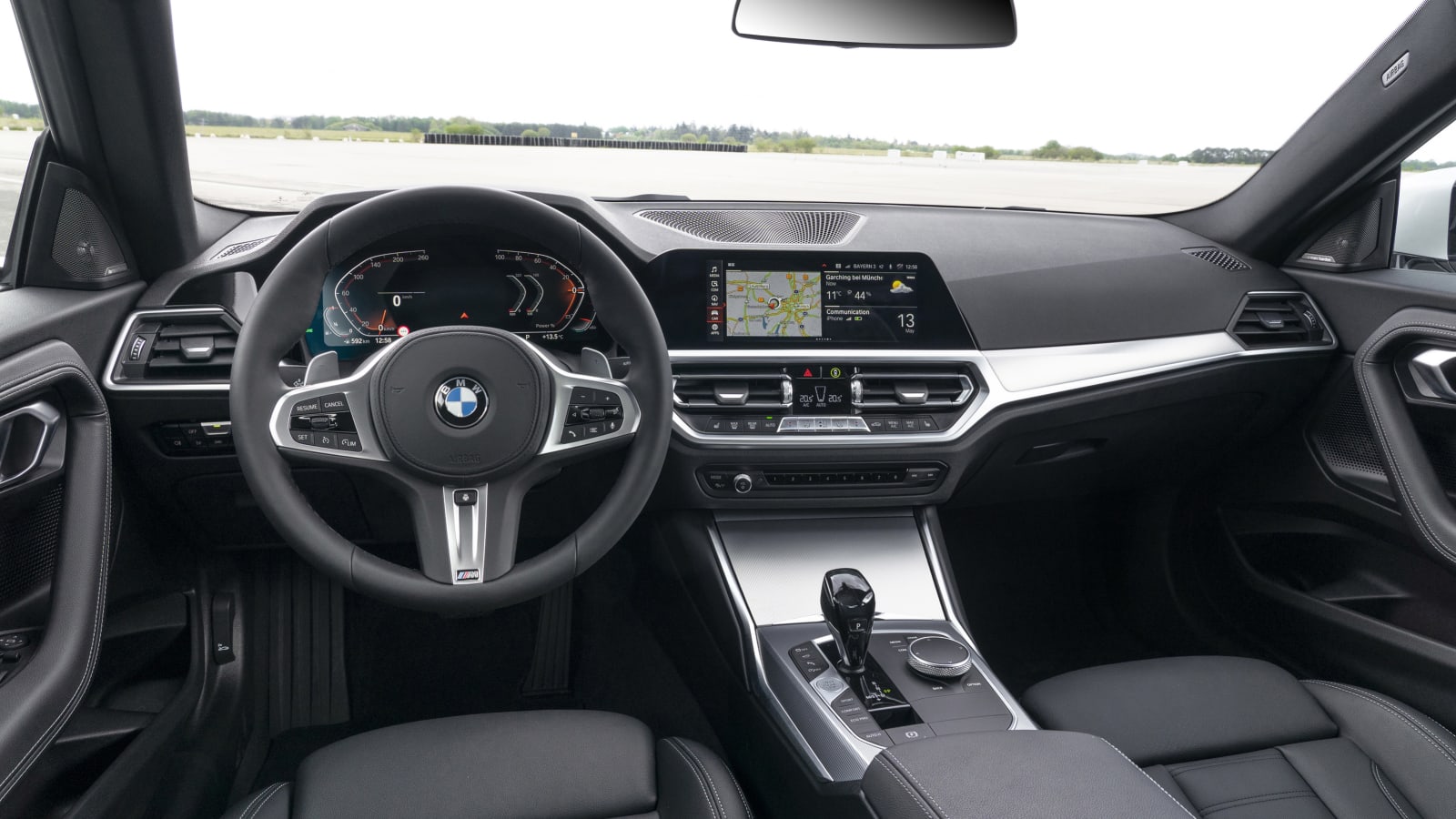With the controversial design of the BMW 4 Series, we've anxiously awaited what the company would do with the 2022 2 Series coupe. The good news is that the über-grille has not reappeared. In addition, the 2 Series packs even more power than before.
Although the grille is relatively normal by BMW standards, the 2 Series coupe is still distinctive. It has shark-like headlights and bulging, blistered fenders. The long nose and short deck seem even more prominent than before. And some of that may be a result of the fact that the new 2 is in fact larger than its predecessor. Depending on whether it's a 230i or an M240i, it ranges between 3.5 and 4.3 inches longer overall. And both versions have a 2-inch longer wheelbase and are 2.6 inches wider.
Powering the 2 Series is a choice of two engines. The base 230i models will get a turbocharged 2.0-liter four-cylinder making an extra 7 horsepower and 37 pound-feet of torque for totals of 255 and 295 respectively. The M240i models come with a turbocharged 3.0-liter six-cylinder making 382 horsepower and 369 pound-feet of torque. That's an increase of 47 horsepower over the previous year, but just 1 pound-foot of torque. Both models will be available with rear-wheel drive or all-wheel drive, but the sole transmission option is an eight-speed automatic, whereas the outgoing 2 Series could still be had with a six-speed manual.

The 2 Series coupe uses a strut front suspension and a multilink setup at the rear. It also features aluminum front fenders and an aluminum hood to get the weight distribution even front to rear. The 230i, which weighs 3,519 pounds, has a distribution of 51.6% front and 48.4% rear, whereas the 3,871-pound 240i xDrive has 53.1% of its weight at the front and 46.9% at the back. Only these two variants were given, as they'll be the first ones on sale, with 230i xDrive and M240i will come a little later. The M240i models will get a few extra performance goodies, too. It will get an electronically-controlled rear limited-slip differential, adaptive suspension and larger brakes with four-piston front calipers.
As for the interior, it's still clearly BMW, but brought up to date. It has geometric vents and screens that are all nicely implemented, but not particularly bold. Standard features include three-zone automatic climate control, power seats, navigation, automatic emergency braking, lane-keep assist, blind-spot warning, rear cross-traffic alert, 10-speaker sound system and wireless CarPlay and Android Auto. A variety of wheels, colors, interiors and body and trim upgrades will be available as options.
The 2022 2 Series goes on sale this November. As we already mentioned, the rear-drive 230i and the all-wheel-drive M240i xDrive will be the first two versions available. The all-wheel-drive 230i xDrive and rear-drive M240i will come later. Pricing has not been announced, but expect it to be revealed by this fall.
Comments
Post a Comment